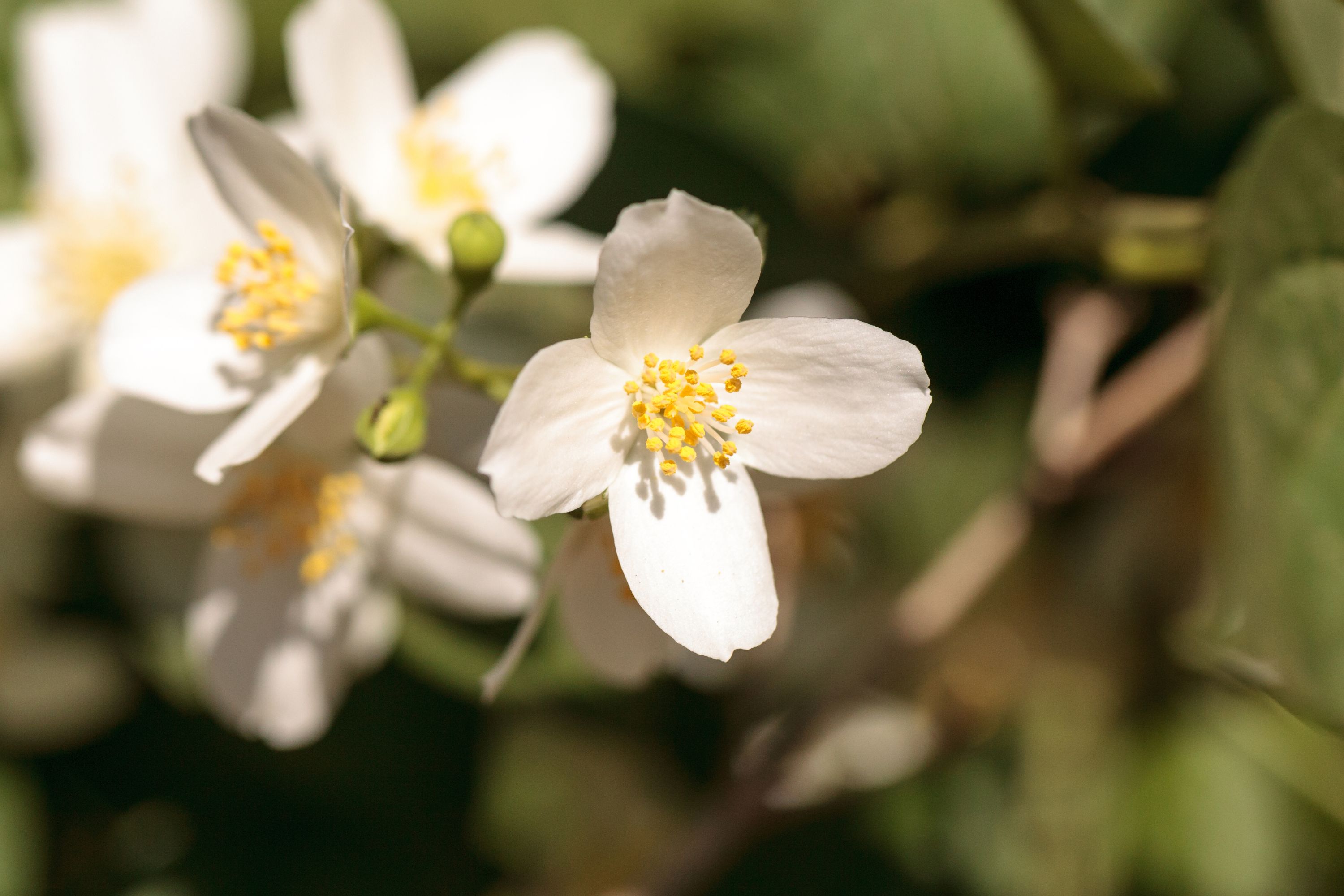Lewis' mock orange
(Philadelphus lewisii)

Description
Philadelphus lewisii, commonly known as Lewis's mock orange or wild mock orange, is a deciduous shrub that belongs to the Hydrangeaceae family. The plant is native to western North America, specifically in the regions of the Rocky Mountains and Pacific Northwest. Lewis's mock orange has been valued for its fragrant white flowers and its hardy nature, making it a popular choice in gardens and landscapes. In this article, we will explore the various aspects of this fascinating shrub, including its taxonomy, morphology, habitat, cultivation, and uses. Taxonomy: Philadelphus lewisii was first described by David Douglas in 1829, who named the plant after his friend Meriwether Lewis, the famous explorer of the western United States. The genus Philadelphus contains around 60 species of deciduous shrubs that are distributed throughout the temperate regions of the Northern Hemisphere. Morphology: Lewis's mock orange is a shrub that can grow up to 3-10 feet tall and wide. The plant has an upright growth habit and produces numerous stems that are covered in smooth, gray bark. The leaves of the plant are dark green, ovate to elliptic in shape, and measure around 1-4 inches in length. The margins of the leaves are serrated, and the leaves are arranged alternately on the stems. The plant produces fragrant white flowers that are around 1-2 inches in diameter. The flowers have four petals and are arranged in clusters at the ends of the stems. The fruit of the plant is a small capsule that contains numerous seeds. Habitat: Lewis's mock orange is native to the western United States and is found growing in a variety of habitats, including woodlands, meadows, and along stream banks. The plant prefers well-draining soils that are rich in organic matter and can tolerate a wide range of pH levels. Lewis's mock orange is adapted to a variety of climatic conditions and can grow in areas with cold winters and hot summers. Cultivation: Lewis's mock orange is a popular ornamental shrub and is cultivated for its fragrant flowers and attractive foliage. The plant is easy to grow and can be propagated through seeds, cuttings, or layering. The shrub prefers full sun to partial shade and can tolerate a range of soil types, as long as they are well-draining. The plant is relatively drought-tolerant but performs best when provided with regular water. Lewis's mock orange is also tolerant of pruning and can be shaped to fit a particular landscape design. Uses: Lewis's mock orange is primarily cultivated as an ornamental shrub for its fragrant flowers and attractive foliage. The plant is often used as a specimen plant in gardens and landscapes or as a hedge or screen. The fragrant flowers of the plant are also used in the production of perfumes and essential oils. In addition, the plant has traditional medicinal uses among Native American tribes. The leaves and bark of the plant were used to treat various ailments, including fever, colds, and coughs. Conclusion: Philadelphus lewisii, or Lewis's mock orange, is a hardy and attractive shrub that is well-suited for gardens and landscapes in western North America. The plant's fragrant flowers and attractive foliage make it a popular choice among gardeners, while its adaptability and easy cultivation make it a low-maintenance option for landscapes. In addition, the plant's traditional medicinal uses and commercial applications make it a valuable resource for both cultural and economic purposes. Overall, Lewis's mock orange is a fascinating and versatile plant that deserves to be recognized and appreciated for its many contributions.
Taxonomic tree:







